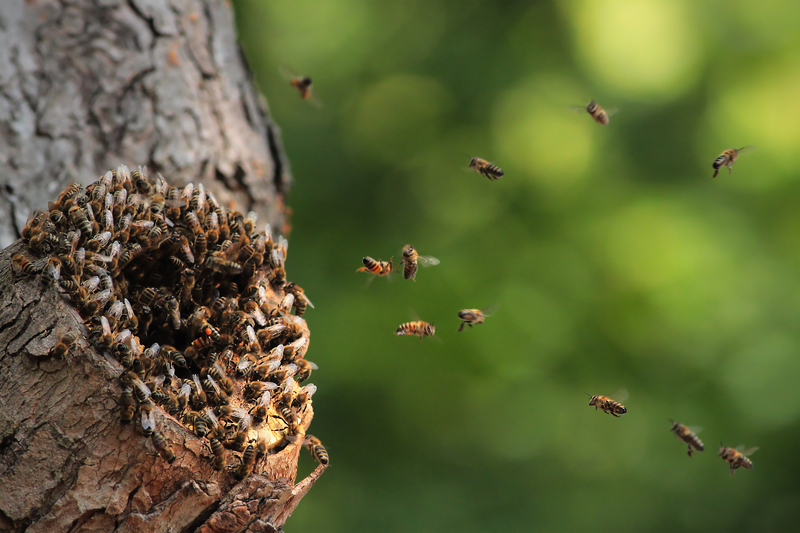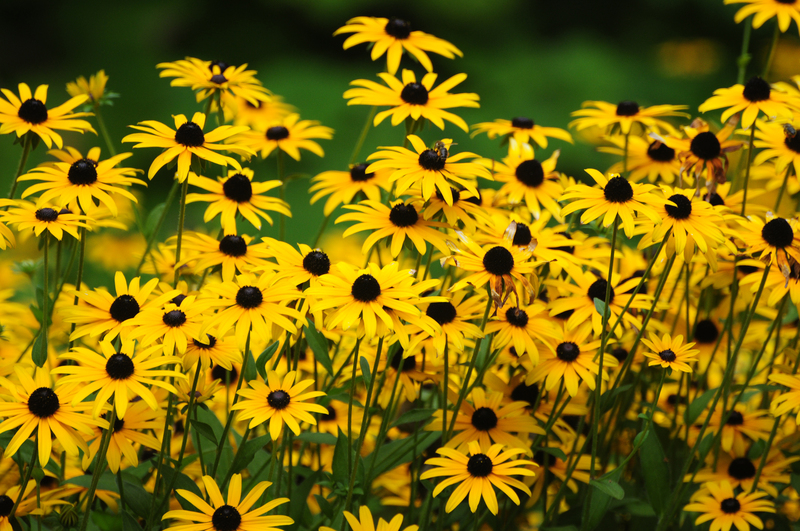Achieving Harmony: Integrating Seating into Garden Design
Posted on 01/06/2025
Achieving Harmony: Integrating Seating into Garden Design
In today's rapidly evolving world, the garden is more than just a picturesque backdrop - it is a cherished sanctuary for relaxation, rejuvenation, and connection with nature. Central to the enjoyment of any outdoor space is thoughtfully integrated seating. But how do you achieve harmony when incorporating sitting areas into your garden landscape? This comprehensive guide will walk you through the art and science of integrating seating into garden design for comfort, style, and seamless unity.
Understanding the Importance of Harmonious Garden Seating
Seating in the garden isn't merely functional--it influences the overall atmosphere and ambience of your outdoor haven. When strategically integrated, seating encourages relaxation, brings people together, and offers unique vantage points to appreciate the beauty of your landscape.
- Creates functional spaces for conversation, contemplation, or dining.
- Influences movement through the garden with inviting destinations.
- Adds structure to the landscape by delineating zones.
- Enhances flow and visual unity by connecting hardscape with planting.
The goal of harmoniously integrating seating into garden design is to ensure that every element--from benches to built-ins--feels like a natural extension of the garden itself.

Principles of Integrating Seating into Garden Design
Achieving a balanced relationship between garden and seating involves careful planning, creative vision, and practical understanding. Let's examine the core principles:
1. Consider the Garden's Style and Theme
Begin by identifying your garden's overall aesthetic. Whether it's formal, cottage, Mediterranean, modern, or woodland, your seating choice and layout should reflect and reinforce that style. For example:
- Formal gardens: Opt for classic stone benches or wrought-iron chairs with defined geometric arrangements.
- Modern landscapes: Go for minimalist built-in seating or sleek modular benches in concrete or smooth wood.
- Cottage-style gardens: Incorporate painted wood benches or whimsical swinging seats nestled among blooms.
2. Location, Location, Location!
Placement is paramount when it comes to integrating seating into landscape design. Consider:
- Sun and shade: Locate seats where users can choose sun or shade at different times. Use arbors, trees, or pergolas to regulate exposure.
- Views and vistas: Place seating to frame attractive garden features, distant views, or water elements.
- Privacy and enclosure: Tuck seats into secluded corners or partially shield with planting, trellises, or screens for intimacy.
- Accessibility: Ensure pathways are wide and level enough for easy approach and comfortable use.
3. Cohesive Material Choices
Materials bridge the visual and tactile experience between seating and surroundings. To achieve balance:
- Echo existing materials in patios, paths, or raised beds (such as natural stone, brick, or timber).
- Select complementary colors that blend with foliage and blooms.
- Consider weather-resistance: Choose durable, low-maintenance materials that withstand local climate variations.
A bench built from the same stone as a garden wall, or a deck bench crafted from matching hardwood, for instance, naturally merges with its context.
4. Sizing and Scale
Proportion is essential for both visual unity and user comfort. Key points include:
- Match the scale of seating to the size of the garden and nearby elements (petite for smaller spaces, substantial for grander settings).
- Allow for circulation -- enough room for people to move around seats without congestion.
- Flexible arrangements: Consider movable furniture or modular benching for versatile layouts.
5. Linking Planting and Seating
*Never underestimate the impact of surrounding greenery on comfort and aesthetics!*
- Soften edges with trailing plants, ornamental grasses, or low shrubs.
- Create microclimates with layered planting to shelter from winds or enhance shade.
- Seasonal interest: Integrate seating near fragrant, colorful, or textural plants for year-round enjoyment.
Integrating garden seats into lush borders or among softly rustling leaves not only looks inviting but positively impacts relaxation and mindfulness.
Types of Seating for a Harmonious Garden
Your choice of seating significantly affects the unity and functionality of your outdoor space. Explore these popular options for harmonious garden furniture integration:
1. Benches
Benches are timeless, versatile, and work in traditional or contemporary gardens. Available in stone, wood, metal, or composite, benches can be:
- Freestanding: Stand-alone features placed along paths or under trees.
- Built-in: Incorporated into retaining walls, decks, or raised beds for a seamless look.
- Curved or circular: Wrapped around fire pits, ponds, or trees for sociable gatherings.
2. Lounge and Dining Sets
For outdoor entertaining or family time, consider integrating:
- Dining tables with matching chairs: Ideal for patios and paved areas.
- Sectional sofas: Low-profile, all-weather designs that blend into garden rooms.
- Daybeds and chaise lounges: Perfect for sunny decks, poolside retreats, and relaxation nooks.
Choose weather-resistant materials (such as powder-coated aluminum, teak, or resin) and coordinate cushions for comfort and cohesion.
3. Swings, Hammocks, and Hanging Chairs
Embrace playful relaxation with swaying seating:
- Porch swings for shaded verandas.
- Rope hammocks between sturdy trees or specially designed stands.
- Suspended egg chairs in contemporary garden rooms.
These options add a sense of fun, movement, and a strong garden-lifestyle ambiance.
4. Boulders, Stumps, and Natural Elements
For a truly organic feel, integrate natural seating such as:
- Large flat boulders: Placed alone or in groups, they double as sculptural features.
- Tree stumps or log seats: Ideal for woodland schemes or children's play zones.
These options require minimal intervention and become part of the garden's permanent structure.
5. Built-in Raised Seating
Elevated seats set into planters or low retaining walls provide informal perches and blend architecture with soft landscaping. These are especially effective in urban gardens or where space is at a premium.
Designing for Comfort, Privacy, and Atmosphere
Seating must not only look good but also feel inviting. Craft a welcoming, harmonious garden seating area by addressing the following:
Comfortable Dimensions
- Seat height should be 16-18 inches for most adults.
- Depth of 18-24 inches accommodates lounging with or without cushions.
- Backrest angle adds support and feels relaxing (around 100? is ideal).
Add weatherproof pillows or pads for additional comfort, and ensure seats don't get too hot or cold with seasonal conditions.
Achieving Privacy and Enclosure
- Use screens, trellises, or lattices draped with climbers to create "rooms" and block unsightly views.
- Strategically place tall pots, shrubs, or grasses for subtle borders and sense of seclusion.
A sense of partial enclosure adds intimacy to garden seating integration without cutting off the beauty of the surrounding landscape.
Inviting Atmosphere: Lighting, Sound, and Scent
- Install low-voltage landscape lighting to highlight paths and create nighttime allure.
- Fountains or water bowls mask noise and encourage tranquility.
- Plant aromatic herbs and flowers (lavender, jasmine, rosemary) by sitting areas for soothing scent.
Best Practices for Integrating Seating into Garden Design
Follow these expert tips for harmonious outcomes:
- Plan circulation first. Map out paths, access points, and natural connectors before adding furniture or fixtures.
- Provide multiple seating options. Combine benches, chairs, and built-in perches to suit different needs and group sizes.
- Blend with planting. Use drought-tolerant and architectural plants to soften seating edges and anchor them visually.
- Maintain sightlines. Situate seats to offer rewarding views without blocking major vistas or creating obstacles.
- Think year-round. Position some seating for winter sun and others for summer shade. Select tough, all-season materials.
- Match accessories. Add matching planters, side tables, or lanterns to unify the look.
Common Mistakes to Avoid in Garden Seating Integration
To ensure seamless harmony, steer clear of these pitfalls when integrating seating into your garden design:
- Ignoring the surroundings: Selecting seats that clash with the garden's character or color palette.
- Poor placement: Placing seats where they're too exposed, too close to utilities, or interrupting pathways.
- Overcrowding: Trying to fit too much furniture for the space available, making the garden feel cramped.
- Neglecting comfort: Choosing hard, upright seats or unshaded locations, discouraging use.
- Overlooking maintenance: Using materials that deteriorate rapidly or are hard to clean.
Case Studies: Inspiring Examples of Harmonic Seating Integration
Let's draw inspiration from real gardens that successfully integrate harmonious seating areas:
Case Study 1: Contemporary Urban Retreat
A small city terrace transformed into a modern outdoor living space features a built-in L-shaped bench made from the same timber as the fence. Grasses and architectural succulents enclose the seat, while uplighting and slate planters tie the scheme together. The effect is calming, cohesive, and perfect for entertaining.
Case Study 2: English Cottage Garden Delight
A rustic painted wooden bench placed beneath a flowering arbor creates a storybook moment in a cottage-style garden. The bench is weathered to blend with gravel paths and overflowing perennial borders, while scented roses and clematis provide immersive color and fragrance.
Case Study 3: Naturalistic Woodland Escape
Amongst birches and ferns, flat sandstone slabs are set into the ground as informal "chairs." Understated and organic, these blend perfectly into the forested backdrop, with dappled sunshine completing a tranquil retreat for contemplation.

FAQ: Integrating Seating into Garden Design
-
Q: How can I make seating feel natural in a small garden?
A: Opt for built-in seating, use folding chairs, or tuck compact benches onto patios or beneath trees. Blend seats with edge planting for softness. -
Q: What's the best material for all-weather outdoor seating?
A: Choose teak, powder-coated metal, or all-weather wicker. For cushions, use quick-dry foam and UV-resistant fabrics. -
Q: How do I create privacy around my garden seating area?
A: Add trellises with climbers, tall pots, or groupings of shrubs and grasses. Partial enclosure balances privacy and openness. -
Q: Should I use portable or fixed seating?
A: Movable seats offer flexibility; fixed benches maximize space and blend structure with landscape, especially in small or sloped spaces.
Conclusion: Enjoying Unity and Serenity through Thoughtful Seating Integration
Achieving harmony in the garden is an evolving journey, and integrating seating into your garden design is one of the most effective ways to create a welcoming, unified, and practical outdoor environment. With careful attention to style, placement, materials, scale, and planting, you can design inviting destinations that connect people with nature and with each other. Take inspiration from the possibilities, and let your creative integration of seating become the heart of your harmonious garden retreat.
Ready to transform your outdoor space? Start planning your harmonious garden seating integration today and enjoy the rewards of a balanced, beautiful landscape for years to come.

